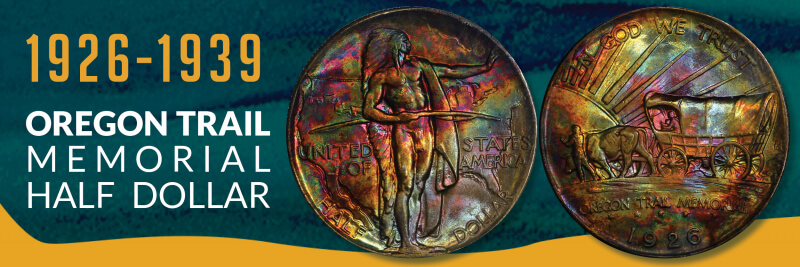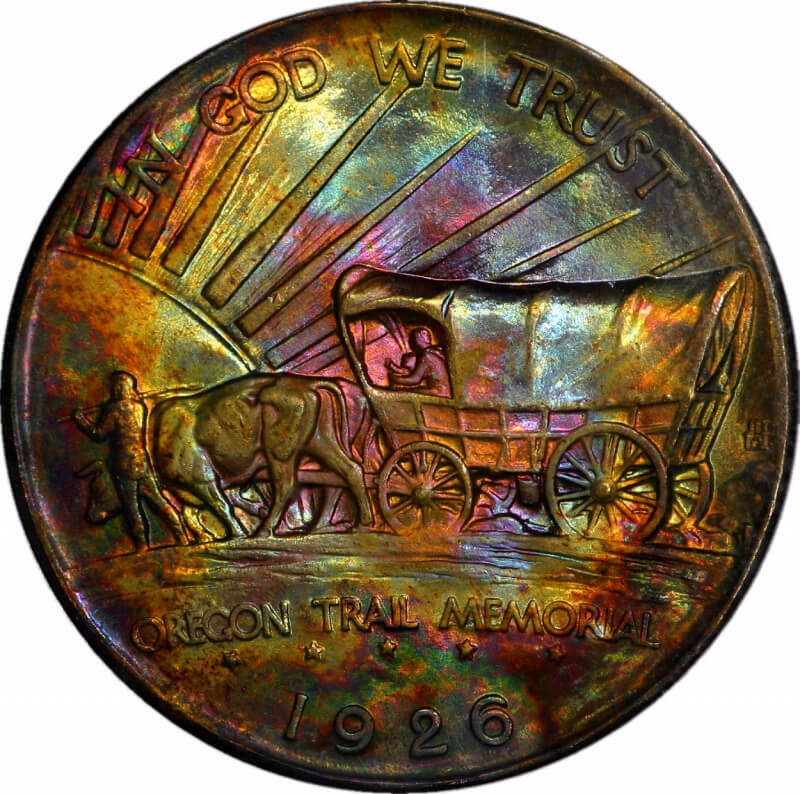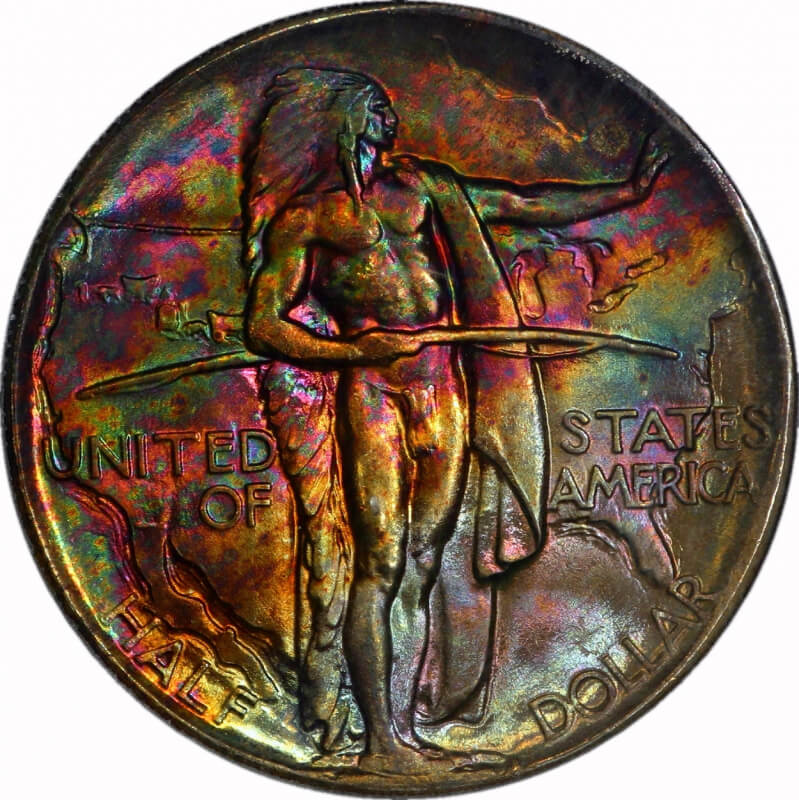
1926-1939 Oregon Trail Memorial Half Dollar
Click the images above for enhanced view.
Purpose:
To commemorate the heroism of the frontier families that traveled the Oregon Trail to the Far West and to raise money for markers at important points along the existing trail.
Maximum Number Authorized: 6,000,000 coins for the entire issue.
Sale Price: Varies depending on year between $1.00 and $2.00 for individual pieces.
Designs:
Obverse – James Earle Fraser
A Conestoga wagon drawn over a hill by two oxen heading westward. A figure is holding a stick or branch, most likely used as a crop. The sun is setting and its rays extend across the sky. Five stars appear above the date of issue along with the inscription “OREGON TRAIL MEMORIAL.” James Earle Fraser and Laura Gardin Fraser’s initials are located right behind the Conestoga wagon.
Online Resource: https://www.history.com/topics/westward-expansion/oregon-trail
Reverse – Laura Gardin Fraser
A full figure rendition of a Native American standing erect with an outstretched arm and raised hand. The Native American is wearing a headdress and is carrying a blanket and bow. In the background is a map of the United States with a line of wagons heading west.
Online Resource: https://www.octa-trails.org/articles/disrupting-the-natives/
Popularity:
Oregon Trail Memorial half dollars were struck in eight different years. The total mintage during that time for sale to the public amounted to 264,250. Coins in 1938 and 1939 were sold in PDS Mint sets. A total of 61,317 were returned and melted.
Trivia:
-
Ezra Meeker, president of the Oregon Trail Pioneer Memorial Association appeared before Congress in 1926 to support the commemorative half dollar at the age of 95. He had traveled the Oregon Trail with his wife and newborn son in 1852.
-
While flour could be purchased for $4 per 10 pound sack at the trail’s starting point in Independence, Missouri, the price rose to $1 per pint along the way.
-
It is estimated that between 3-10 percent of emigrants who traveled the Oregon Trail died along the way.
-
There is a difference of opinion as to the message the Native American is trying to convey with his outstretched hand.
-
He is trying to stop the white man’s progress westward.
-
He is trying to convey the difficulties and dangers in traveling the Oregon Trail.
-
He is signaling that there should be peace between the natives and travelers.
-
-
Several collectors were upset with the Mint for making the same coin over a course of several years. They surmised that the Mint was trying to convince collectors to purchase a coin each year the half dollars were minted so they would have a complete set.&n
bsp;
For more information:
Encyclopedia of the Commemorative Coins of the United States by Anthony J. Swiatek
KWS Publishers (2012)
Commemorative Coins of the United States Identification and Price Guide by Anthony J. Swiatek
Amos Press Publishers (2001)
Astoria by Peter Stark
Ecco Publishers (2014)
References:
Encyclopedia of the Commemorative Coins of the United States by Anthony J. Swiatek
KWS Publishers (2012)
The Encyclopedia of United States Silver & Gold Commemorative Coins 1892 to 1954 by Anthony Swiatek and Walter Breen
Arco Publishing, Inc. (1981)

